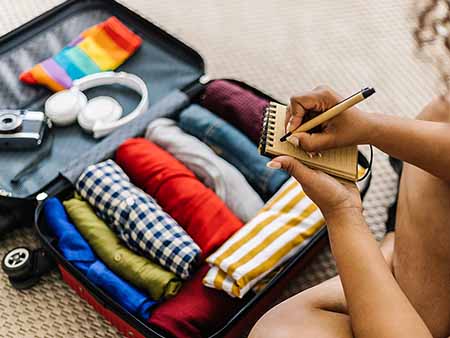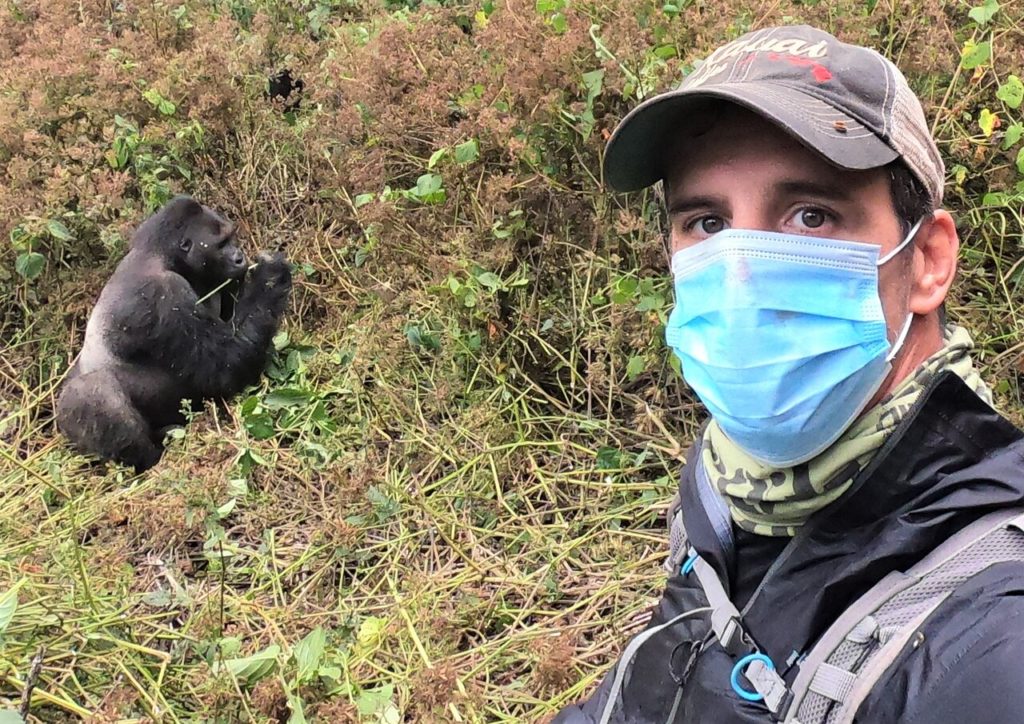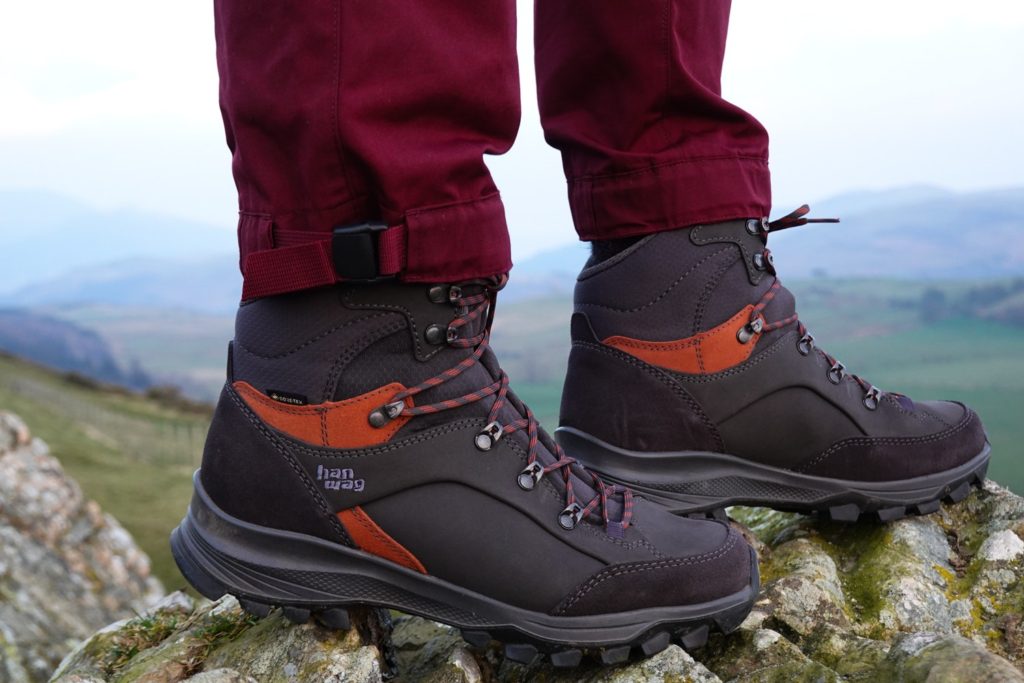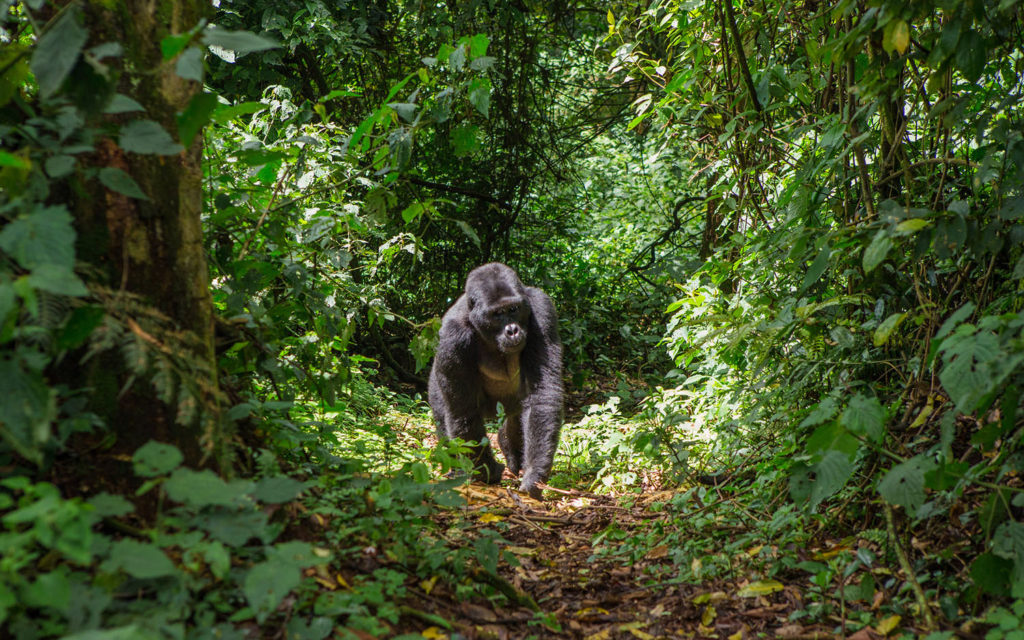Knowing the actual gorilla trekking packing list is an important part to planning a success gorilla safari. We have provided you with a list of the practical things to pack for your gorilla trek In Africa.
- Hiking Boots. Buy boots that go above your ankles – they protect you from strains.
- Garden Gloves. These protect your hands – they are important.
- Rain Jacket. Doesn’t matter if you are trekking in the dry or wet season.
- Long Sleeved Shirt or Blouse. The sleeves protect your arms.
- Energy Giving snacks. You might use some extra sugar during your trek.
- Cameras and extra batteries. Unless you don’t care to keep the memories.
- Hat or bandana. This covers your head and stops bugs from falling Into your hair.
- Pair of Binoculars. You might hear the sound of a bird high up in the canopy – these come in handy.
Gorilla Trekking is an experience that doesn’t come cheap and may be physically demanding – The trekking day Usually starts with the Uganda Wildlife Authority park ranger guide explaining the various options if we become too fatigued to continue, ranging from turning back to shelling out a tremendous amount of cash ( US$250 – US$500) to hire a team to transport you through the jungle on a stretcher – but also enormously rewarding to observe the majestic mountain gorillas in their environment.
Mountain gorillas are critically endangered, and the African Wildlife Foundation estimates mountain gorillas population has risen to a whopping 100 gorillas currently living in the wild. These mountain gorillas live in four (04) national parks spanning three (03) countries: Bwindi Impenetrable National Park and Mgahinga Gorilla National Park in Uganda, Volcanoes National Park in Rwanda, and Virunga National Park in the Democratic Republic of the Congo.
Whether you are visiting Bwindi Impenetrable National Park – Uganda or Volcanoes National Park – Rwanda, the packing list should remain largely the same.
Note: This Gorilla Trekking packing list focuses solely on the items you will need to bring with you on the actual day of your gorilla trek; it does not include other items that you might need on your tour or safari to other parks. If your trip to Africa includes going on a ga
Clothing & Shoes (What to wear on your gorilla trekking Day)
- Long-Sleeved Shirt or Jacket – Gorilla Treks begin early in the morning, and you may be chilly at the start of your trek. Depending on the time of year, you may want long sleeves during the entirety of your trek. In addition to warmth, long sleeves help protect your arms against stinging nettles or branches.
- Short-Sleeved Shirt – Dressing in layers is a good idea. The day involves strenuous activity in the humid jungle, and you may want to shed your outer layers – during the day.
- Long Pants – You will be encountering thick vines, fallen trees, and scratchy brush, and you will want to have protection on your legs. We recommend thick leggings or Pants….just not too heavy allow you to move freely while still covering your legs.
- Tall/Long Socks – Keeping the biting “safari ants” out of your pants is important! Your guide will instruct you to tuck your pants into your socks, and tall socks are best for this task.
- Hiking Shoes – Shoes with a good grip are a must. The terrain can be difficult to navigate, including thick vines, slippery rocks, patches of mud, and more. If your shoes are waterproof, all the better.
- Rain Jacket – The national parks where the mountain gorillas live are largely rainforest, and it can rain unexpectedly.
- Gloves – Not many hikes with gloves, but we recommend you bring a pair of tough gloves to protect your hands from stinging plant thorns.
- Headband & Hair Ties – This helps organize your hair and prevent it from being all over you especially when you begin to sweat.
Toiletries & Medicine
- Malaria Pills – This is the exception to my earlier note: you don’t need to bring your malaria pills with you on the hike, but I wanted to include them as a reminder. All of the four national parks where you can track the mountain gorillas are located in malarial zones, and you should discuss options to safeguard yourself from malaria with your doctor.
- Insect Repellant – Malaria aside, being bitten by mosquitoes is no fun and can ruin your experience.
- Toilet Paper – There are no toilets in the jungle. Remember that you must leave the forest with everything that you brought into it, so you may want to bring a plastic bag for this purpose.
Gear & Equipment
- Camera – For capturing the moment.
- Binoculars – To watch and spot them from afar.
Documents & Money
- Documentation – You should come prepared with any documentation or numbers related to your gorilla tracking permit. If booked on an organized Gorilla trekking Tour with an agent or tour Company, your Guide will have all the necessary Documentation – just relax.
- Passport – Don’t forget to bring your passport, as you will need to show it when you check in for the trek.
- Local Currency – Remember to tip your guide! The local currency is also useful if you decide you want to hire a local porter or want to purchase souvenirs. A porter Costs US$20.
Other necessities
- Water – Bring as much water as you can carry. Staying hydrated is important. If booked with Realm Africa Safaris™, we will provide you with enough water to take with you on the trek, and all through your trip with us.
- Packed Lunch & Snacks – Tracking the mountain gorillas is unpredictable, and you might be hiking through the jungle for as many as seven hours or more. Even if you are only hiking for a few hours, your group will likely stop for a bit to allow everyone to eat their packed lunches. You should bring some healthy snacks, too, such as nuts or dried fruit, and energy snacks to keep your energy up while you are hiking. Similarly, if booked with Realm Africa Safaris™, we will provide you with a packed lunch for you to take on your trek.
You Might also like this:





